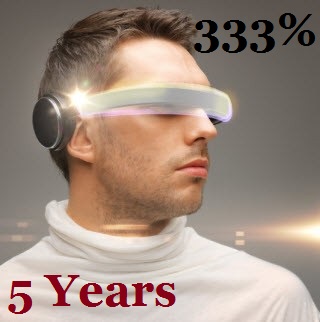The Glass features will now include a “listen to” option added to its standard voice commands.
It has now been announced that Google Glass, the wearable mobile augmented reality product form the tech giant, will be including music among its standard voice commands.
This gives wearers the ability to use their voices to complete many tasks relating to listening to music.
The hope is to help to further expand the benefits of these augmented reality glasses, allowing the wearer to listen to music based on voice commands. However, it will also allow the wearer to be able to search for songs, browse through various playlists that have been saved, and stream music that is available at Google Play.
This has further enhanced Google Glass far beyond only augmented reality capabilities.
To be able to access songs and other features through these wearable augmented reality devices, users will be able to link them to their Play accounts. This will give them the ability to stream music as well as the view playlists and song recommendations that are based on the tunes that they have previously listened.
The headphones which will allow wearers to change the use from visual, such as augmented reality, to private listening are not a cheap product. The Glass, itself, currently comes with a price tag of $1,500, for the Explorer Edition, which has been available on a limited basis since April. By the end of the month, the headphones will be $85. That transforms the eyeglasses into a full audio experience that is voice controlled.
Beyond this new standard feature, Google Glass also provides a unique wearable computer experience, similar to a type of smartphone in the form of glasses. It allows for augmented reality, capturing photos, recording videos, chatting, looking things up on the internet, and obtaining directions.
According to Ed Sanders, the Google Glass director of marketing who spoke about this new feature beyond augmented reality, “With these new features, we’re now building a great music experience on Glass, whether you’re a classical music professor, an acclaimed sound engineer and hip-hop producer, or someone who wants to listen to their favorite tunes anytime, anywhere.”

 Juniper believes that by that time, augmented reality will have expanded greatly into areas such as healthcare and lifestyle. It could help with remote doctor visit experiences, as well as to help to enhance the remote shopping experience as well as that through social networks. It has also seen a potential future in enterprise, such as providing technical specs for aircraft mechanics and drawings to overlay on machinery for engineers to use for building new technologies.
Juniper believes that by that time, augmented reality will have expanded greatly into areas such as healthcare and lifestyle. It could help with remote doctor visit experiences, as well as to help to enhance the remote shopping experience as well as that through social networks. It has also seen a potential future in enterprise, such as providing technical specs for aircraft mechanics and drawings to overlay on machinery for engineers to use for building new technologies.